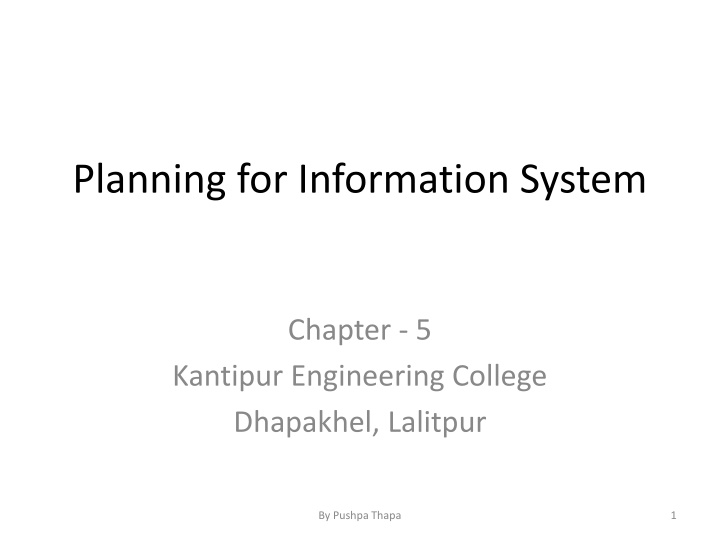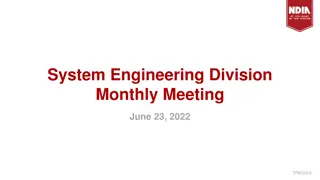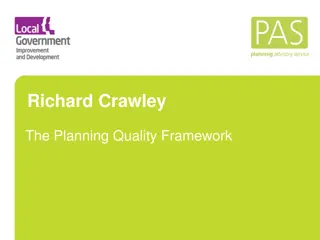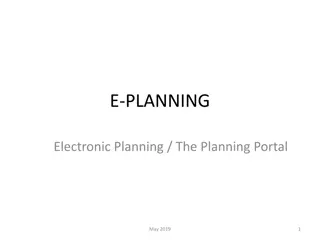Planning for Information System at Kantipur Engineering College
Information system planning is a formal process that develops a plan for developing and managing information systems to support organizational goals. The process includes activities, monitoring progress, implementing changes, aligning with business needs, and establishing goals. Different approaches to planning, such as top-down and bottom-up planning, are discussed along with the information system planning process steps like establishing a mission statement, setting goals, deriving strategies and policies.
Uploaded on Mar 19, 2025 | 0 Views
Download Presentation

Please find below an Image/Link to download the presentation.
The content on the website is provided AS IS for your information and personal use only. It may not be sold, licensed, or shared on other websites without obtaining consent from the author.If you encounter any issues during the download, it is possible that the publisher has removed the file from their server.
You are allowed to download the files provided on this website for personal or commercial use, subject to the condition that they are used lawfully. All files are the property of their respective owners.
The content on the website is provided AS IS for your information and personal use only. It may not be sold, licensed, or shared on other websites without obtaining consent from the author.
E N D
Presentation Transcript
Planning for Information System Chapter - 5 Kantipur Engineering College Dhapakhel, Lalitpur By Pushpa Thapa 1
What is Information System Planning Information system planning is a formal process that develops plan for developing and managing information systems that will support goals of an organization. Information System plan includes: Activities planner believes will help achieve goals. Program for monitoring real-world progress. Means for implementing changes in the plan. By Pushpa Thapa 2
Why Plan? To obtain resources Financial Facilities Capacity planning Staff To align Information System with the business To identify needed applications To establish goal, schedule, and milestone in order to track progress To provide an opportunity for communication with top management and user management By Pushpa Thapa 3
Approaches to Planning Top-down Planning Focuses on organizational goals first, then on the needs of business units Bottom-up Planning Focuses on needs of business units first, then on organizational goals By Pushpa Thapa 4
Information System Planning Process Establish a mission statement Assess the environment Set goals and objectives Derive strategies and policies Develop long-, medium-, and short-range plans implement plans and monitor results By Pushpa Thapa 5
Establish a Mission Statement These are services that you are responsible for; it is your place in the organization. It is not what you are supposed to achieve, it is who you are and what you do in the company. By Pushpa Thapa 6
Goals and Objectives Set goals what do you want to achieve? Set objectives what are your specific, measurable targets? By Pushpa Thapa 7
Derive strategies and policies Strategies for Technology focus Personnel and career development Aligning with the company Funding criteria; how much to spend on IT? Policies for Funding criteria; how much to spend on IT? Allocation criteria; priority setting Organizational arrangements Use of outside IT services, outsourcing Selling IT services to outside organizations By Pushpa Thapa 8
Develop long-, medium-, and short- range plans Short-Range the next year, the next budget period; developing and operating current systems Medium-Range committing to development efforts for applications that will take more than one year to complete; meeting management s current information needs, projected into the future for as many years as needed to complete them. This is what most organizations call Long- Range Planning. Long-Range planning preparing for management s future information needs. These are not application specific; they are investments in infrastructure ; it is creating an information architecture. By Pushpa Thapa 9
What are Key Elements of IS Planning Key elements of an IS Plan are Corporate mission statement Vision for IT within organization IS strategic and tactical plans Operations plan to achieve mission and vision Budget to ensure resources are available By Pushpa Thapa 10
Steps of Information Systems Planning By Pushpa Thapa 11
Information Systems Planning The Corporate and IS Mission Statements The corporate mission statement details the purpose of the organization and its overall goals. IS mission statement outlines the purpose of ISs in the organization. By Pushpa Thapa 12
Information Systems Planning The IT Vision Wish list of what IS managers would like to see in terms of hardware, software, and communications, to contribute to goals of the organization By Pushpa Thapa 13
Information Systems Planning Strategic IS Planning IS Strategic plan details what is to be achieved Strategic plans are designed with the entire organization in mind and begin with an organization's mission. Essentially, strategic plans look ahead to where the organization wants to be in three, five, even ten years. Strategic plans, provided by top-level managers, serve as the framework for lower-level planning. By Pushpa Thapa 14
Strategic Information System Strategic Information System is a system that helps companies alter their business strategy. It is used to accelerate the reaction time to environmental changes and aid the company in achieving a competitive advantage over its competitors. They help in producing low cost quality products. The strategic role of IS involves using IT to develop products, services, and capabilities that give company major advantages over the competitive forces it faces in the global marketplace. By Pushpa Thapa 15
Typical Strategic-Level Job Titles Top-level Managers CEOs or Presidents General Manager Corporate Boards Steering Committee Board of Directors will design and execute strategic plans to paint a picture of the desired future and long-term goals of the organization. By Pushpa Thapa 16
Tactical IS Planning IS Tactical plan describes how goals will be met and by when Tactical IS Plan performed by middle managers responsible for acquisition and allocation of resources for projects according to tactical plans, set out for one or two years. Tactical IS Planning is evaluates current and projected information needs of the organization, prioritizes IS development projects, and develops allocation plans for financial and technology resources. By Pushpa Thapa 17
What are important factors in IS tactical planning Important Factors in IS Tactical Planning Flexibility Compatibility Connectivity Scalability Standardization Total Cost of Ownership By Pushpa Thapa 18
Typical Tactical-Level Job Titles Advertising manager Personnel manager Creative director Manager of information systems Communications director Chief Financial Officer By Pushpa Thapa 19
Operational IS Planning Operational Plan prepared by a component of an organization that clearly defines actions it will take to support the strategic objectives and plans of upper management. Operational IS Planning develops plans such as annual operating budgets and individual IS project plans. Operations IS Planning performed by supervisors of smaller work units concerned with planning and control of short-term (typically, a week or six months) budgets and schedules. By Pushpa Thapa 20
Hierarchy of Planning By Pushpa Thapa 21
Three levels of planning. By Pushpa Thapa 22
Thank You By Pushpa Thapa 23























